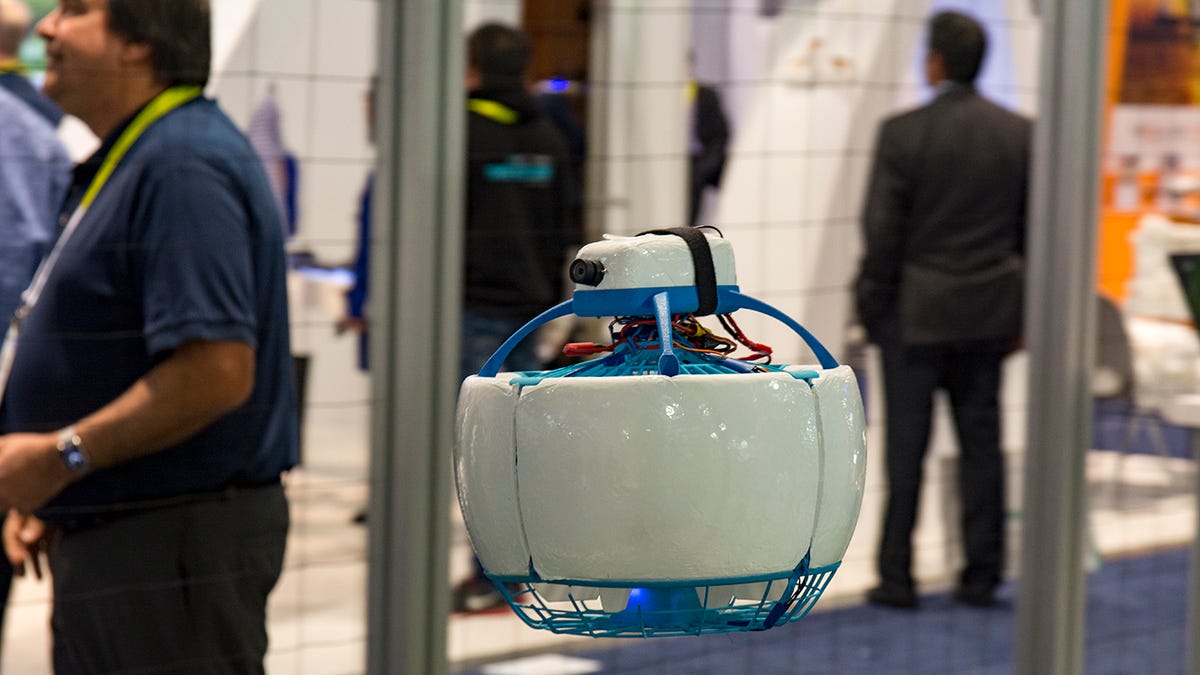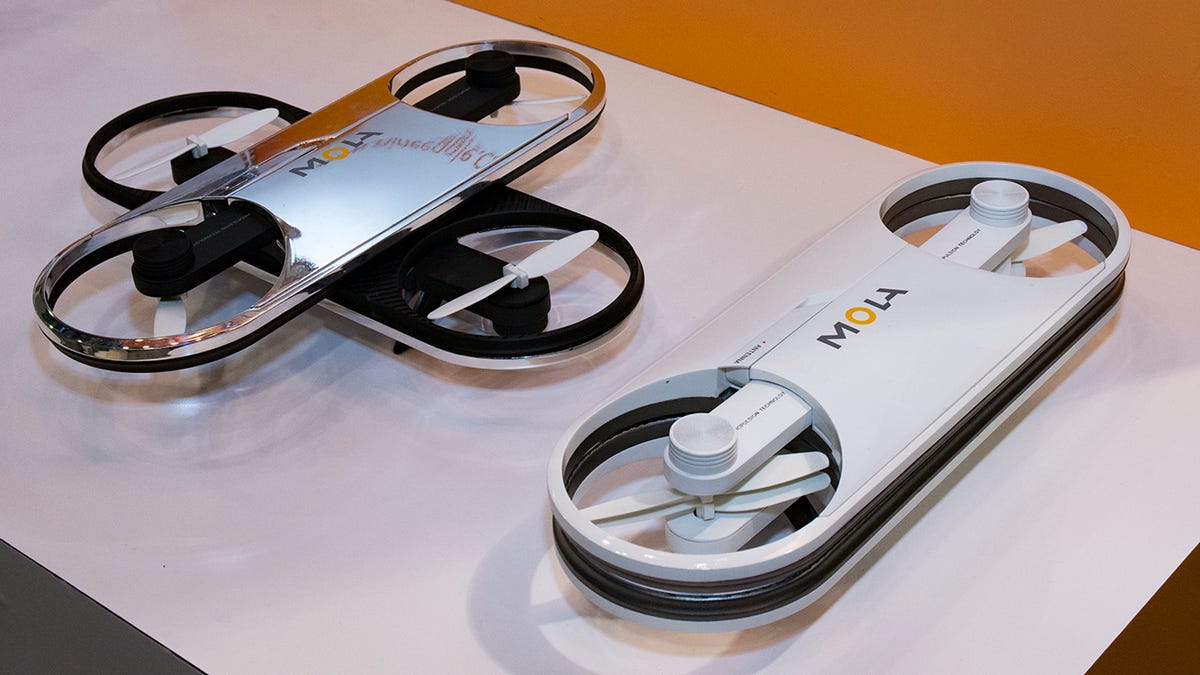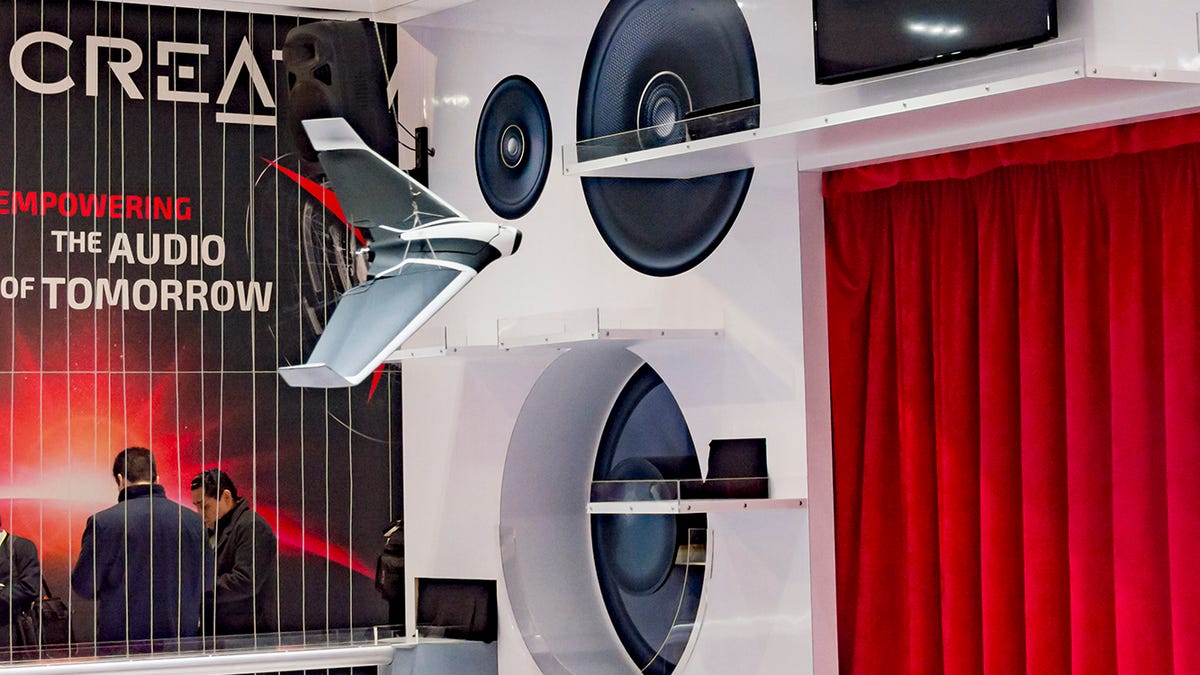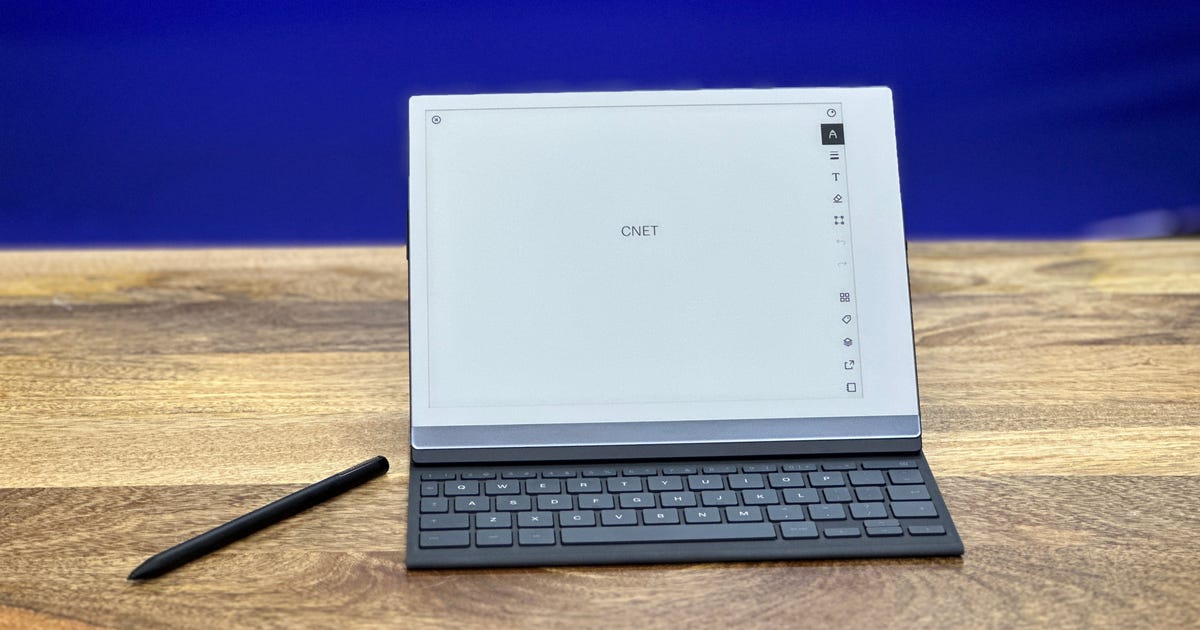This story is part of CES 2016. Our editors bring you complete CES 2016 coverage and scour the showroom floor for the hottest new tech gadgets around.


Now playing:
Watch this:
Intel shows intelligent drone with Real Sense tech
2:11
With so many drone expos popping up throughout the year, I don’t know that CES will ever become the place where all the big manufacturers come to make any major announcements. Case in point, the biggest announcement for the category actually came from Intel at its press conference where it demonstrated the Yuneec Typhoon H, announced at CES 2016, fitted with a module using Intel’s RealSense technology for automated collision avoidance.
The leader in the category, DJI, announced a black version of its Inspire 1 Pro drone and the Phantom 3 4K, which is the same as the older Phantom 3 Professional, but with a shorter video transmission range and at a lower resolution. Parrot announced the Disco, a fixed-wing drone project for consumers that may be out sometime this year with no pricing. Another big name, 3D Robotics, announced an update to its Solo drone that will allow it to do a couple new computer-assisted camera moves called Smart Shots.
Those may have been the major drone-related announcements to come out of CES 2016, but this is just the start of the year. Based on what I saw, here are some trends to expect as new models rollout throughout 2016.
Here are the drones that will crowd the skies in 2016 (pictures)






Sense and avoid
If CES 2016 showed us anything, it’s that good obstacle avoidance is here for consumers. This year we’ll see more drones use GPS to track your moves — on foot, bike, wakeboard or whatever — and manufacturers like 3DR, Yuneec and AirDog have been fine-tuning their systems for the best experience. Without the capability to avoid things like trees, cars, people and buildings, though, you’re relegated to using “Follow Me” tracking only out in open spaces or risk crashing.
The Intel RealSense module is an add-on for the Typhoon H, but the hexacopter also has sonar sensors to keep it from running into large objects like buildings and cars. Other drones, like the little ONAGOfly, use passive infrared sensors to put on the brakes before it runs into someone or something.
Safer drones, but safer pilots, too
Obstacle avoidance technologies are certainly helpful for preventing an accident, but this year we’ll see more systems designed to keep you, your drone and others safe. The Xiro Xplorer 2.0, for example, has redundant GPS systems, so that if you lose a GPS lock on one, the other can kick in so you can keep it under control. The Parrot Disco uses specialized geofencing to keep it from flying away from the pilot, turning around and returning home once it hits its limit. The aforementioned Typhoon H has a failsafe that should one of its six motors stop mid-flight, it will be able to use the others to bring it down safely.

Fleye
Joshua Goldman/CNET
Many more models have sensors aimed at the ground to help them fly indoors when GPS can’t be used. Speaking of GPS, lower-end drones like the $200 Hubsan X4 FPV Brushless can now be found with simple return-to-home, or more advanced versions that can be triggered manually or automatically when the battery runs low or when the transmitter connection is lost guided by GPS. There are safer designs, too, such as the Fleye, which has its propellers completely inside its body and the outside is completely padded — even the camera on top is padded.
But you can’t rely on the technology to keep you safe all the time, so becoming a better pilot is key, too. That means flying responsibly and getting a lot of practice. Helping there are people like Jonathan Daniels, President of Aerodrome, the world’s first droneport in Boulder City, Nevada who I met up with at CES. Aerodrome is designed to give UAV pilots somewhere to takeoff, fly and land, but train as well by offering piloting and licensing courses. There’s even a giant cage for pilots to practice in. Although there’s only the one Aerodrome at the moment, the hope is that many more will open around the US to make it easier to find a safe place for consumers and commercial pilots to learn and fly.
Off to the races
Drone racing is growing in popularity, showing you can do more with a consumer quadcopter than capture video from air. Still, there wasn’t much of a presence at CES 2016, or at least not in the Unmanned Systems Marketplace. Maybe that’s because most people in the hobby build their own, but I still expected there to be more vendors promoting the parts, tools, transmitters and first-person-view (FPV) goggles for racing. It could be that the vendors went to the Academy of Model Aeronautics’ AMA Expo that started on January 8 instead. Regardless, the crowds in the Walkera booth were big, buzzing around its latest ready-to-fly (RTF) racing drones like the Furious 320.


Mola X 1.0
Joshua Goldman/CNET
Fresh looks and lighter weights
At last year’s CES, many of the quadcopters found in the Unmanned Systems Marketplace were little more than DJI Phantom clones that didn’t do as much or work nearly as well. There were still a few of those this year, but there were many more with unique designs. The Eken FlyHawk is a hexacopter that is sort of a triangular shape with a battery that loads vertically from the top, making battery swaps fast, but also makes it more compact. The Mola X 1.0, expected in April, looks like a giant capsule with four propellers. It is actually two separate pieces that twist apart to become an X-shaped quadcopter with a full HD camera, GPS for steady flight outdoors and sensors to help with flying inside, and it’s all controlled with your smartphone.
As more of a side note, some vendors have started advertising the fact that their drones weigh less than the FAA’s 250-gram weight to require registration. The previously mentioned ONAGOfly and many others are less than that, so you would not be required to register with the FAA. Though a couple of the manufacturers I spoke with weren’t concerned with creating drones under this weight, I expect to see more advertising that they do not need registration. Less weight also helps with perhaps the biggest annoyance for the hobby: flight times.


Parrot Disco
Joshua Goldman/CNET
Battery life still sucks
There’s nothing much to say here other than battery technology really has to improve for consumer drones to get significantly better flight times. Most of the small drones still only get between 5-10 minutes, while the larger models get 20-30 minutes. The one exception at CES was the ultralight Parrot Disco, which, using its single propeller, can stay in the air up to 45 minutes.
The current crop of drones do more to help average consumers takeoff with their very own flying robots. It’s also clear that interest in the category is still growing and there will be plenty of options to meet the demand. What’s not clear is how long the interest will last. Drones will never be the next VCR or DVD player, or smartphone or tablet. They are helping push new technologies and new uses for them, however. While you might not want to capture aerial video or race quadcopters using FPV goggles — now or in the future — the technology used to do those things will likely end up in something you do want or need.




